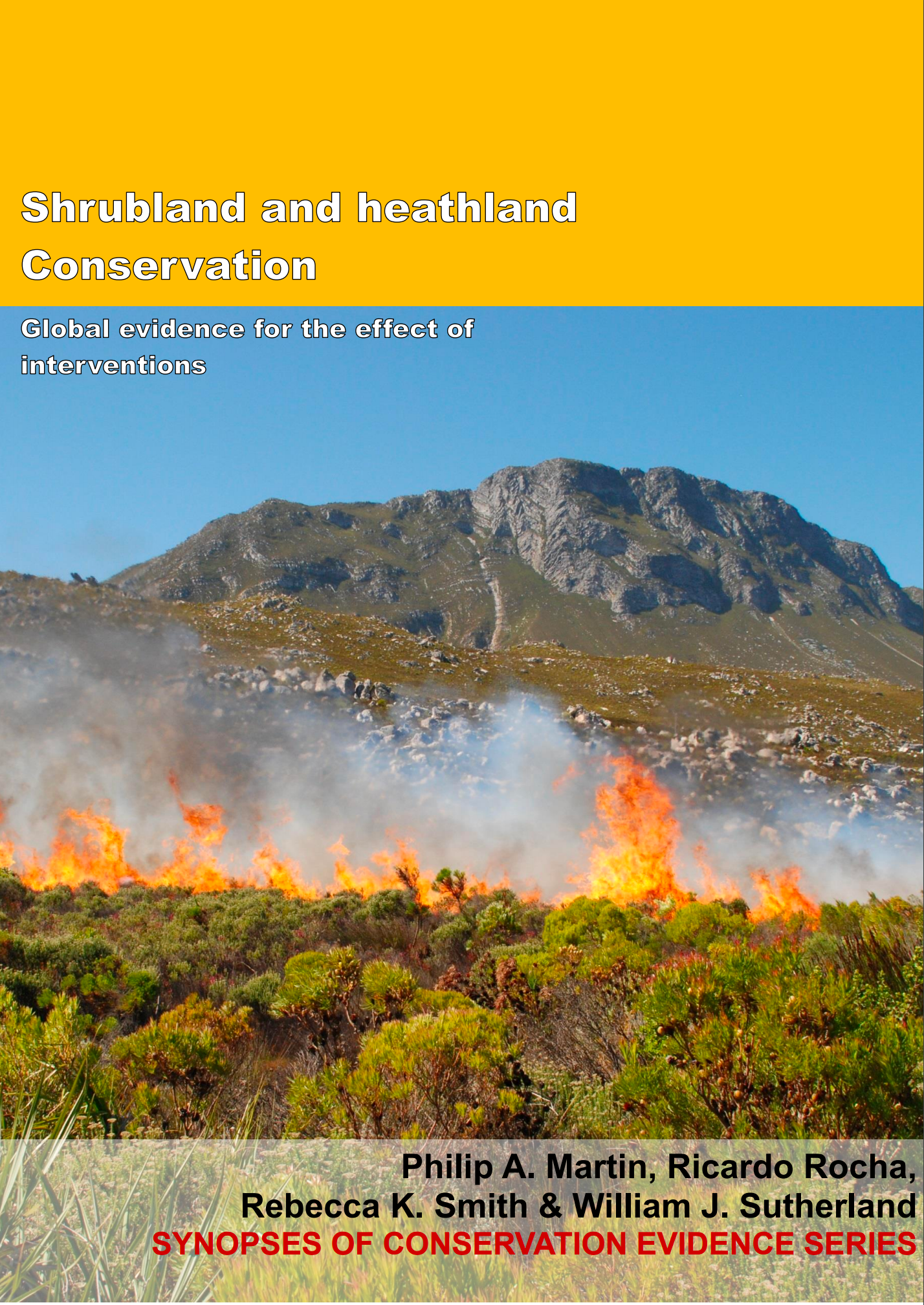Use prescribed burning to control trees
-
Overall effectiveness category Unknown effectiveness (limited evidence)
-
Number of studies: 2
View assessment score
Hide assessment score
How is the evidence assessed?
-
Effectiveness
10% -
Certainty
20% -
Harms
22%
Study locations
Supporting evidence from individual studies
A randomized, replicated, controlled, before-and-after trial in 2003-2004 in two sagebrush ecosystems in California, USA (Ellsworth & Kauffman 2010) found that using fire to control western juniper Juniperus occidentalis did not change the cover of two out of three grass species after one year. In both sites the cover of squirreltail Hordeum jubatum and sandberg bluegrass Poa secunda did not significantly differ after burning from the cover before burning, and cover did not differ from areas that had not been burned (no data reported). However, in one of the two sites the cover of bluebunch wheatgrass Pseudoroegneria spicata was lower after burning than before burning, and cover was lower in areas that had been burned than in areas that had not been burned (results presented as model results). Five blocks were established in two sites. Each block consisted of three 0.4 ha plots, two of which were burned and one of which was left unburnt. Cover of grasses was estimated in 2004 using two 30 x 60 cm plots within each 0.4 ha plot.
Study and other actions testedA randomized, controlled, before-and-after st udy in 2005–2009 in a heathland invaded by aspen Populus tremuloides and silver birch Betula pendula in Italy (Ascoli et al. 2013) found that prescribed burning to reduce tree cover reduced the cover of common heather Calluna vulgaris, increased the cover of purple moor grass Molinia arundinacea and had mixed effects on the basal area of trees. After five years, cover of common heather declined in areas that were burned (before: 78%, after: 0%) but showed little change in areas that were not burned (before: 72%, after: 72%). Common heather cover in areas that had been burned once increased to 37% but in areas that were burned yearly cover remained at 0%. Purple moor grass cover increased in areas that were burned (before: 76%, after: 94%), and cover also increased in unburned areas (before: 79%, after 91%). Basal area of trees declined one year after burning (before: 3 m2/ha, after: 0.5 m2/ha) and remained at this level for areas that were burned yearly, but increased to 2 m2/ha after five years in areas that were only burned once. In winter 2005 nine 650 m2 plots were burned, another six plots were burned every year in 2005–2009, and six plots were not burned. No statistical analyses were carried out in this study. Five 2 x 2 m quadrats were placed in each plot and the diameter of trees within them measured. Cover of common heather and purple moor grass was estimated using a 10 m transect in each plot along which the presence of both species was recorded every 20 cm.
Study and other actions tested
Where has this evidence come from?
List of journals searched by synopsis
All the journals searched for all synopses
This Action forms part of the Action Synopsis:
Shrubland and Heathland Conservation
Shrubland and Heathland Conservation - Published 2017
Shrubland and Heathland synopsis





)_2023.JPG)














